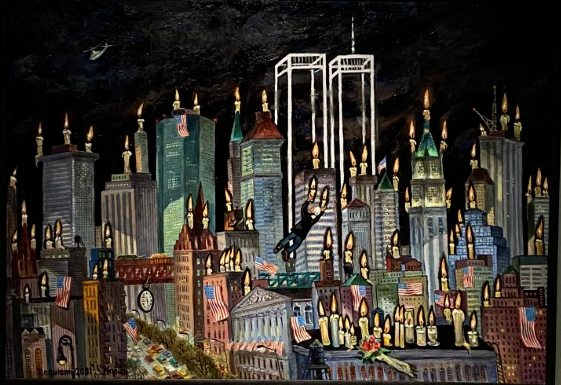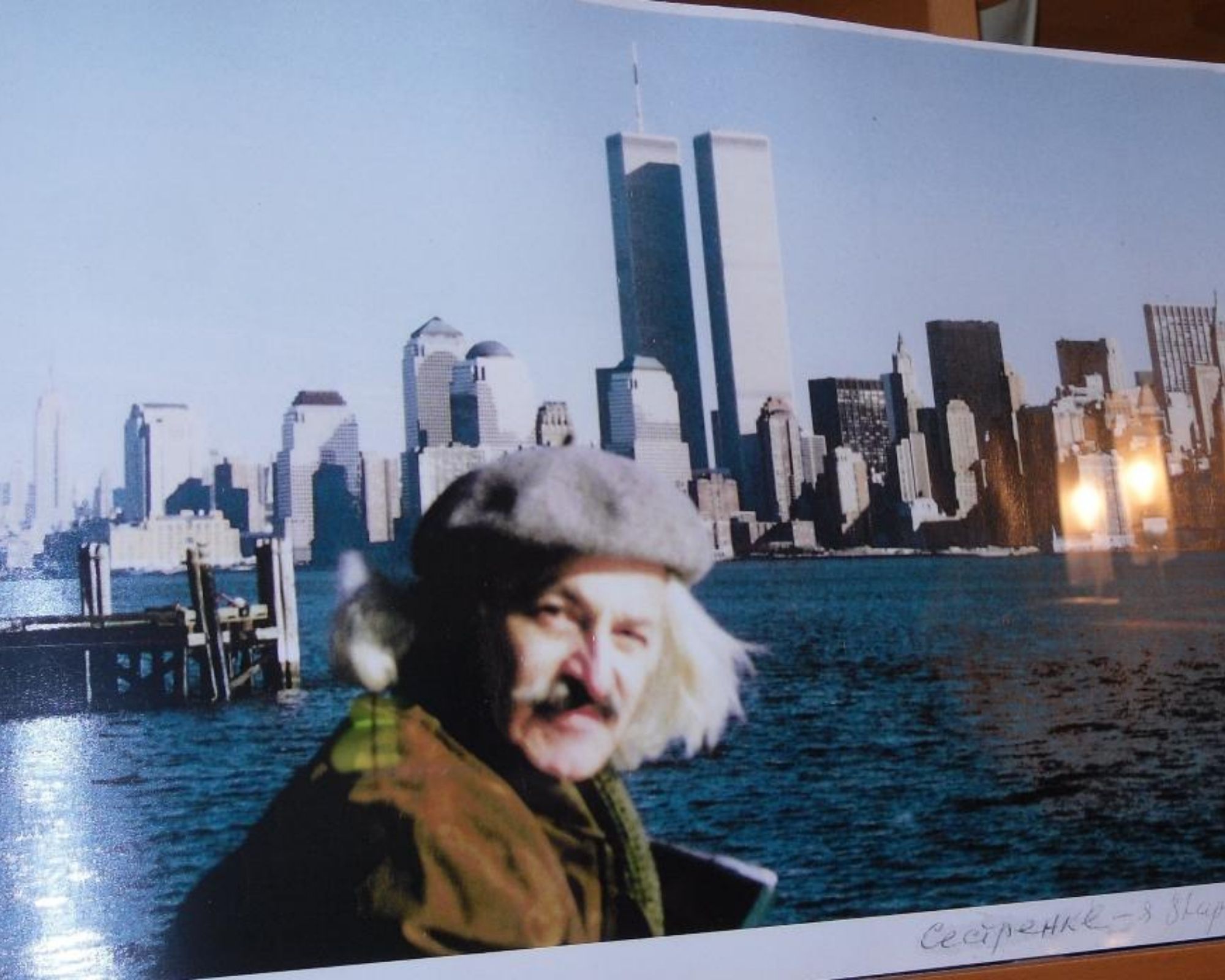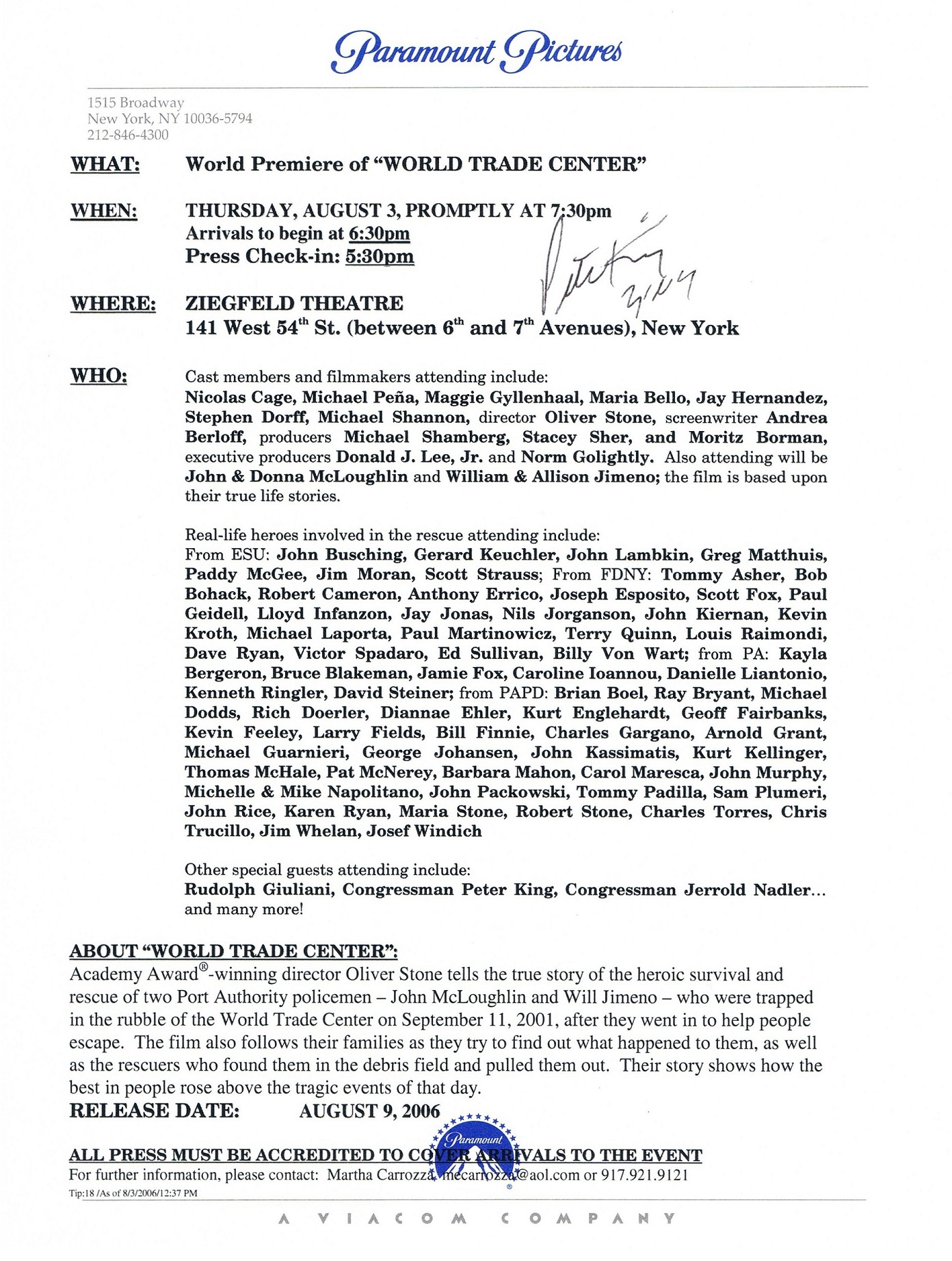Samuel Kaplan: The Path from Ukraine to Requiem
Samuel Kaplan: The Path from Ukraine to Requiem
- July 12, 2022

The artist Samuel Kaplan died last May at the age 93, just a day after his painting Requiem went on view at the Museum. Kaplan was based in Brooklyn on 9/11, at which point he'd been working for several years on a painting that captured the colorful spirit of lower Manhattan with the Twin Towers as its anchor.
But Kaplan's identity as an artist - and his path to the completion of Requiem - was forged amid another grand-scale tragedy. Born in Azerbaijan, he relocated when he was nine to Kyiv, Ukraine, with his mother and younger sister. The outbreak of World War II a few years later necessitated the family's evacuation to Orenburg, Russia. During this time, several uncles and other family members were murdered at Babi Yar, site of the largest mass killing carried out by the Nazi regime against the Soviet Union.
The family faced relentless discrimination as Soviet Jews, and despite having lost so many relatives in the Holocaust, Kaplan returned to Ukraine, determined to finish secondary schooling. He was accepted into the Kyiv Art Institute (now the National Academy of Visual Arts and Architecture) on his third try and completed his course work there in 1962.

The artist spent the next three decades in Ukraine, ultimately immigrating to the United States with his wife, Sofia, in 1991. Following her death, Kaplan moved to Bay Ridge. It was there - on the morning of September 11 but prior to the attacks - that Kaplan ironically began a new sketch for the painting that would become Requiem. In the aftermath of that horrific day, he reimagined the piece to reflect the city's sadness - and hopefulness - in the wake of the unimaginable destruction.
Kaplan was shaped and inspired by two tragedies that took place 60 years apart. With yet one more tragedy unfolding in Ukraine, his longtime homeland, the artist's story stands as a powerful reminder of humanity's astounding capacity for resilience.
Jan S. Ramirez, the Museum's Chief Curator, commented on the internationalism of the painters whose works are now on display in the South Tower galleries, alongside Kaplan's, with backgrounds linked to Japan, Kenya, the Netherlands, and Ghana.
Until September 2001, Ramirez noted, "this site had been New York's aspirational port of world trade, where global goods, ideas, information - and talent - were exchanged and regenerated."
By 9/11 Memorial Staff
For more stories about 9/11 and its continuing impact on all of us, stay in touch.
Previous Post
St. Nicholas Greek Orthodox Church Re-Opens as National Shrine
St. Nicholas Greek Orthodox Church, the only house of worship destroyed on 9/11, was consecrated on July 4 after plans to rebuild it were derailed for years.
Next Post
Ephemera: Premiere of Oliver Stone's World Trade Center

Prolific ephemera collector Michael Ragsdale shares an autographed press release about the 2006 premiere of Oliver Stone's World Trade Center film.